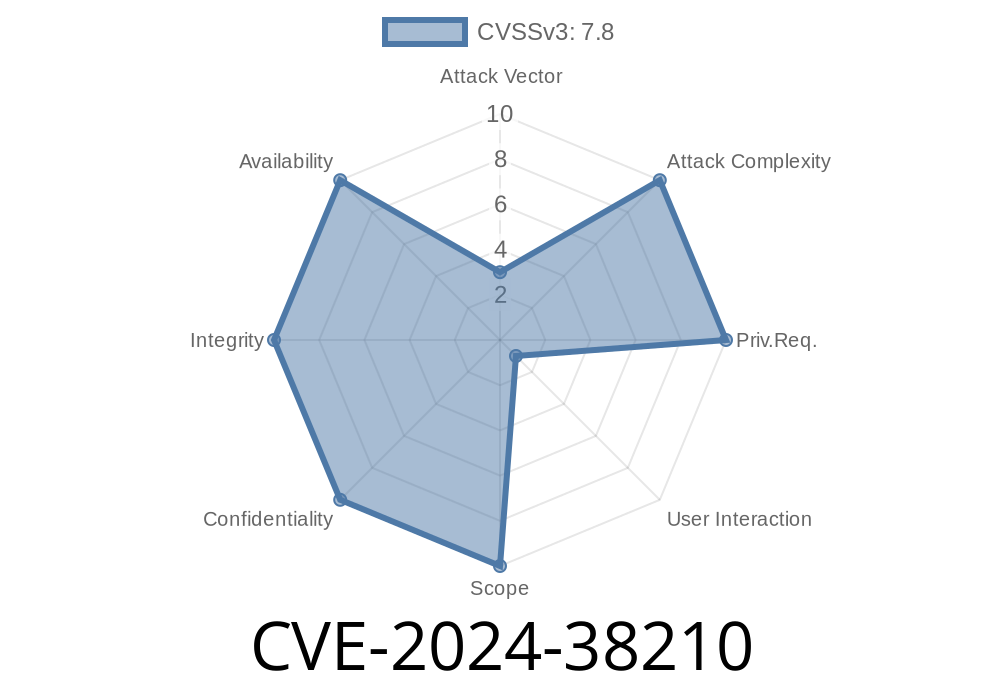---
What is CVE-2024-38210?
On May 14, 2024, Microsoft published information about a critical vulnerability in Microsoft Edge, the Chromium-based web browser that ships with every Windows system. This flaw, tracked as CVE-2024-38210, points to a remote code execution (RCE) bug. With it, a skilled attacker can run arbitrary code on your computer just by tricking you into visiting a malicious website. If exploited, attackers could install programs, steal your data, or take over your entire system.
Understanding The Vulnerability
Edge is built on the open-source Chromium engine, which means this issue also impacts other browsers like Google Chrome and Opera if not patched. The vulnerability lies in the way Edge handles certain crafted HTML and JavaScript inside web pages. Due to a memory management flaw, an attacker can execute code of their choice outside the browser sandbox.
Quick Sample Code: Simulated Exploit Illustration
Here’s a simplified pseudocode example (not an actual working exploit), showing how such a bug could be triggered in the JavaScript engine:
// WARNING: Do NOT try this on a real browser. This is for educational reference only.
let arr = [1.1, 2.2, 3.3];
let corrupt = new Array(1);
corrupt[] = {}; // Setup the array
// Hypothetical vulnerable function
function triggerVuln(arr) {
// A bug lets us overwrite array boundaries (buffer overflow)
arr.length = x10000; // Overextend
for (let i = ; i < arr.length; i++) {
arr[i] = x41414141; // Pattern data for exploit
}
}
triggerVuln(arr);
// If this was a real vulnerability, arbitrary code could be placed in memory and executed.
The real exploit is much more complex but follows the same principle: corrupt the browser’s memory using JavaScript, and then hijack the control flow, such as using JIT spraying.
Real-World Attack Flow
1. Build a Malicious Website: The attacker sets up a site with specially crafted JavaScript and HTML exploiting the memory flaw.
2. Lure Victims: The attacker tricks users into visiting this website, maybe through phishing emails or malicious ads (malvertising).
3. Trigger RCE: When the page loads, the malicious code runs, exploiting the flaw and letting the attacker execute code on the victim’s machine.
Mitigation and Fixes
- Update Edge: Microsoft released patched Edge builds on May 14, 2024. Make sure you are running the latest.
- Automatic Updates: Edge auto-updates for most users. Open Edge, go to Settings > About to check.
- System Patch: Reference full guidance on Microsoft’s CVE bulletin.
References
- Microsoft Security Response Center CVE-2024-38210
- Chromium Security Advisories
- CISA KEV Catalog
- JIT Spraying Explained
Summary
CVE-2024-38210 is a dangerous remote code execution flaw in Microsoft Edge’s Chromium engine. Exploiting it allows attackers to run code on your PC through a website. If you haven’t yet, update your browser now. Remain vigilant against suspicious links and keep your system patched.
*Exclusive write-up for quick awareness. Share with colleagues to help secure everyone’s browser!*
Timeline
Published on: 08/22/2024 23:15:07 UTC
Last modified on: 08/29/2024 21:52:08 UTC
